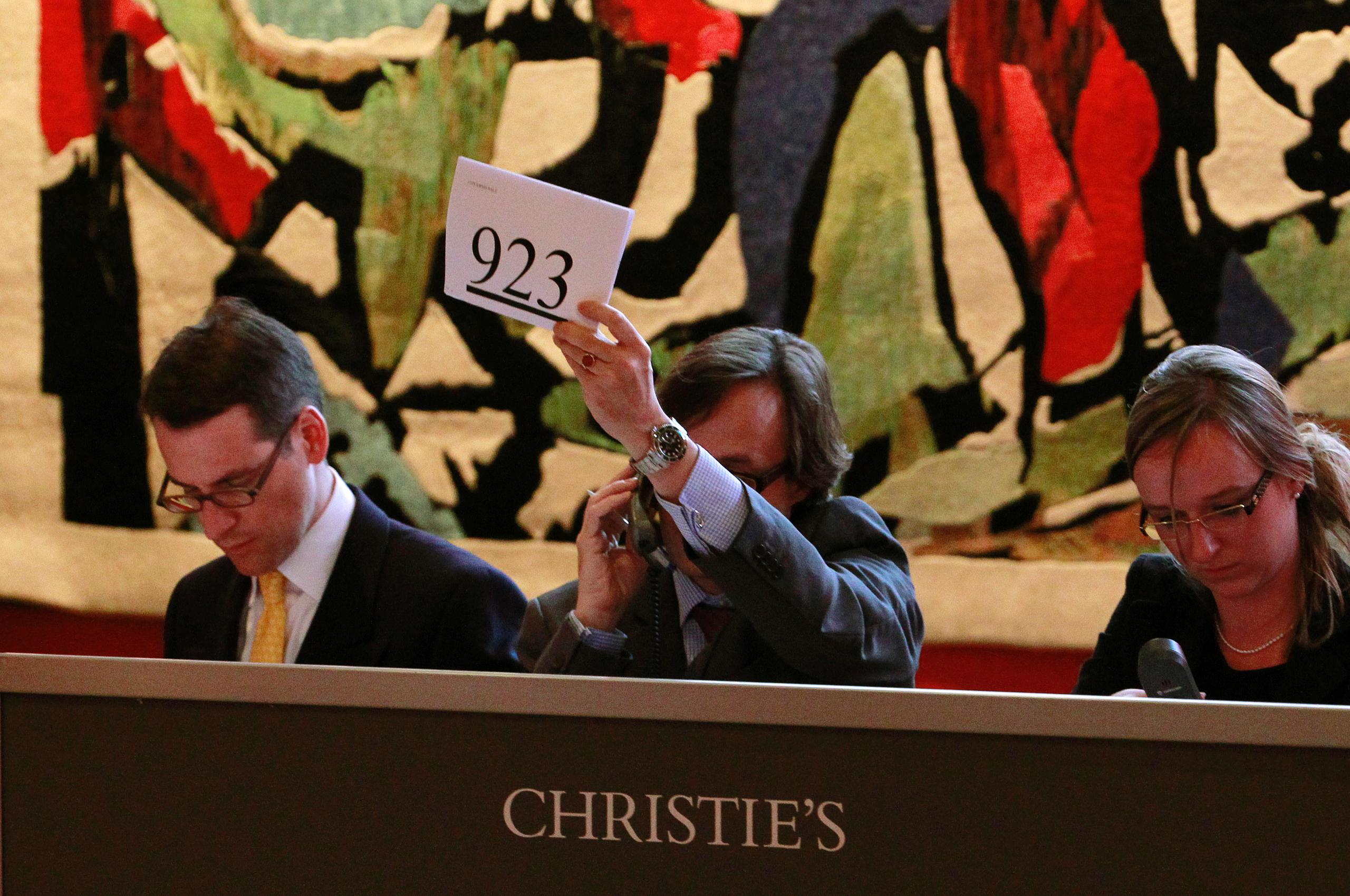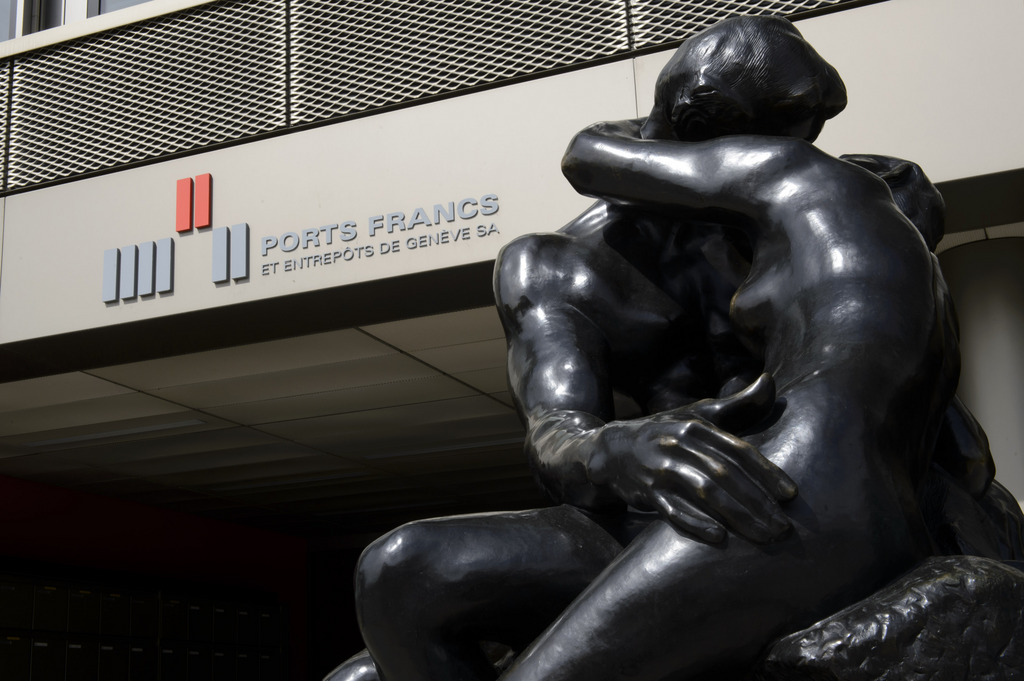
Art: the new frontier in the fight against money laundering

As global prices for works of art continue to smash records, attention is focusing on the opaque workings of a market that escapes money laundering laws and where cash payments flourish and often little is known about vendors and buyers.
“Manipulation, conflicts of interest, and opacity: what is happening in the art market, with all the cash payments, reminds me of banking secrecy 30 years ago. Everybody knows what is going on but nobody wants to think about the consequences,” says Monika Roth, lawyer and professor at Lucerne’s University of Applied Sciences and Arts.
Home to the world’s most important contemporary art fair, Art Basel, Switzerland is ranked sixth in the world for art auctions, according to the website Artprice.
The country has always attracted a large number of foreign collectors due to its political, financial and banking stability, as well as for the quality of infrastructure and its generous tax regime. But also for its discretion, which perhaps explains why Switzerland does not feature in the 2014 list of ten countries that are home to the world’s largest collectors as ranked by the website Larry’s List.
What we do know is that prices for works of art are soaring. The most recent sales in New York in May broke new records as $179.4 million (CHF169 million) was paid for a Picasso and a sculpture by Swiss artist Alberto Giacometti sold for $141.3 million.
Another record was set in February, this time at a private sale in Switzerland: CHF300 million ($320 million) for Gauguin’s Nafea, the star of Basel’s Kunstmuseum that was sold by its owner, the Rudolf Staechelin Foundation. And purchased by whom? A “buyer from Qatar”.
Booming market
The global art market in 2014 was estimated to be worth some CHF51 billion in 2014, according to the TEFAF Art Market reportExternal link, “including 52% in private sales by galleries, traders and fairs”.
In the same year, sales at auctions reached $15.2 billion, up 26%, according to the Artprice Global Art Market Annual Report 2014External link. That represents an increase of 300% over the decade.
“The market is now mature and liquid, offering returns of 10% to 15% per year on works over $100,000,” says Artprice founder and president Thierry Ehrmann.
But Monika Roth says although prices are listed in the catalogues, “these sales are not as public as that. We don’t know who offers what price over the telephone. Often, we don’t even know who the vendor is. And there are manipulators who push up the price at auction to maintain the value of their investment.”
Multinationals like auction houses Christie’s and Sotheby’s have operations in Switzerland, and while they insist they apply the necessary controls, they are reluctant to elaborate.
In the art world, the irrational and emotional are often intertwined, with the result that the price often bears little relation to the true value of the work.
“The primary reason for the explosion of prices is the growth of fortunes in the world and the wealth of players. This means that people are buying more works of art and that they are interested from a certain starting price, according to taste but also because they are looking for new areas to invest in but with discretion,” says Anne-Laure Bandle, lawyer and director of the Art-Law Foundation in Geneva.

More
The discreet bunkers of the super-rich
Controversial free ports
The mix of genres and conflicts of interest are at the heart of the March arrest in Monaco of art dealer Yves Bouvier. With a holding of 20,000 square metres, Bouvier is a major tenant of the Geneva free ports and is being sued for fraud by the Russian collector Dmitri Rybolovlev, who claims he was misled about the prices of works he was buying.
The case has sullied the image of the free ports, which were created in Geneva in 1854 to house merchandise in transit. Today, however, 40% of products stored in the ports are cultural property.
“In the free ports, quantities of cultural items are negotiated without ever leaving and become simple property titles,” says Andrea Raschèr, expert in art law and former head of international affairs at the Federal Office of Culture. “There are even exhibition rooms, parallel arrangements which bear no relation to the purpose of these structures that were created with the intent of transiting merchandise, not storing it for decades.”
Raschèr adds that more and more transactions are being conducted in cash “because a lot of people take their money out and keep it in the free ports”.
This is somewhat bothersome when one takes into account the fact that canton Geneva is 86% shareholder in the free ports.
In its 2014 report, the Federal Audit Office concluded that “these exceptional customs zones are booming and are today worth CHF100 billion”. It recommended an increase in customs controls to deal with the “thorny cases of companies active in stocking artworks or precious metals which sometimes contravene the spirit of the law”.
The government has not yet defined a strategy for applying the new customs law from 2017.
“It has been more than a year since [the government] received the report on the free ports and it still has not responded,” Roth says. “The ordonnance must clearly limit the duration merchandise can be stored. Switzerland should also submit players of the art world to the anti-money laundering laws.”
However, the Bouvier case had the merit of getting Geneva moving. The canton struck a blow last week at the general assembly of free ports by announcing the nomination of a new president, the obligation for shareholders to make themselves known, and the reinforcement of police control of the art market.
Fighting money laundering
From January 2016, the revised law on money laundering will include fiscal violations and end the distinction between tax fraud and tax evasion for which Switzerland has been strongly criticised.
“It’s a complete paradigm change,” says Stiliano Ordolli, head of the Swiss Money Laundering Reporting Office.
How will the law affect cultural property? “The modification does not change the statute of art traders but sets, for all traders in Switzerland, a limit of CHF100,000 for cash payments,” Ordolli says.
“The surplus is payable by credit card or the seller must carry out due diligence obligations. Either the seller does not accept it or they must ask additional questions to be sure of the legal origins of funds.”
At CHF100,000, the limit of cash payments fixed by Switzerland is well above the limits set by the European Union (€7,500/CHF7,750) and the United States ($10,000) on cultural property.
“That’s very nice, but it’s not enough because there is the problem of control,” insists Roth. “There must be real regulation of the art market, if only to protect the honest traders. The big players like Art Basel should think about it because, once the question of banking secrecy is resolved, attention will turn to the art world and that will really hurt!”
Translated from French by Sophie Douez

In compliance with the JTI standards
More: SWI swissinfo.ch certified by the Journalism Trust Initiative

















![The four-metre-long painting "Sonntag der Bergbauern" [Sunday of the Mountain Farmers, 1923-24/26] had to be removed by a crane from the German Chancellery in Berlin for the exhibition in Bern.](https://www.swissinfo.ch/content/wp-content/uploads/sites/13/2025/12/01_Pressebild_KirchnerxKirchner.jpg?ver=a45b19f3)











You can find an overview of ongoing debates with our journalists here . Please join us!
If you want to start a conversation about a topic raised in this article or want to report factual errors, email us at english@swissinfo.ch.